Coppa di testa
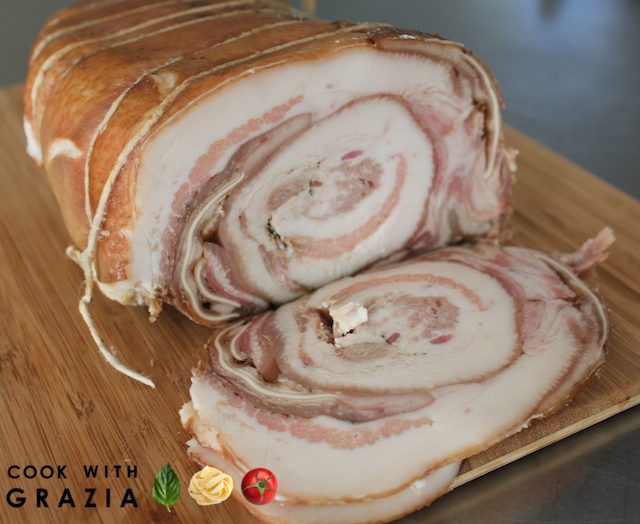
Happy Thanksgiving everyone!
While you are enjoying your turkey, this time of year Italians traditionally would celebrate… pork!
I come from a farming area in the North, where every family used to raise its own pig to slaughter in winter. This tradition, although still alive in few families today, used to happen in my granddad’s house every winter when I was a child. He would hire a butcher to cure the meat, but the entire family would gather to help: it really was a team effort. I still remember wandering around the yard and warehouse (my granddad was a small timber and construction dealer), looking at those huge men handling bloody stuff and watching a gigantic pot of boiling fat to make lard and one of my favorite treat: ciccioli, a meaty, fried by-product of lard. And the perfume of salami hanging into the cellar for the months to come…
This is why last September, when I saw the advertisement at Feast Portland, the largest food and drink festival in the Pacific Northwest, for “Pig Face,” a pig curing class, I signed up in a heart beat.
Elias Cairo from Olympic Provisions, a well-established charcuterie shop located in Portland, was teaching the class – so I was sure that the class would be good.
What I didn’t really realize was that is was a very original hands-on lesson about learning, step-by-step, how to debone… a pig head! Well, even Elias appeared surprised to get a fully booked class of enthusiastic… pig-head-deboners.
“Del maiale non si butta via niente,” or nothing goes wasted from the pig. From the head, you can make coppa di testa and guanciale, and Elias happily shared his salumist’s secrets to make that happen at home.
Coppa di testa, or “head cheese,” is a humble cold cut developed across Europe to use up the entire pig head – and in general, the less noble pork cuts. Guanciale (pillow, literally), on the other hand, is the Italian cured (non-smoked) pork cheek, similar in taste to pancetta and a key ingredient in many Italian recipes.
Elias peppered the class with memories of curing pork while he was training in Switzerland. He shared fascinating traditional stories, great flavors (we had samples!) and that touch of weirdness that makes Portland… unique: I mean, where on earth do you go to a cooking class and come back with a deboned, whole pig face on one hand, and a pig skull on the other????
My family was rather grossed out, not to mention some of my friends who happened to visit me in the following days. 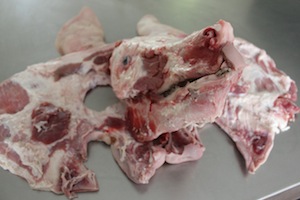 But I was absolutely driven to cook what I had tasted earlier: it was delicious and looked beautiful – much different than anything I had had before.
But I was absolutely driven to cook what I had tasted earlier: it was delicious and looked beautiful – much different than anything I had had before.
Also named “testina in cassetta” (head in a box), the coppa di testa is made in various regions of Italy in quite different ways from Elias’ preparation. In Italy, the whole head is cleaned and boiled for a few hours with some vegetables (usually carrots, celery and onion, sometimes laurel) together with pork rinds and other remnants (sometimes the tongue is included too). The head is then deboned, and everything from the head (except the eyes and brain) plus the other rinds and remnants are minced together with a knife. Different spices are then added. Depending on the area, it may include nutmeg, garlic, lemon or orange zest, sometimes cinnamon, hot chili pepper, coriander, cloves, pistachios, pine nuts, raisins, almonds, even green olives. The pork mixture is then seasoned and stuffed into casings, or set into molds (usually rectangular) to drain for a few hours. The final product is usually eaten fresh since it is cooked and doesn’t need any drying time. It looks like a browner (sometimes squared) version of the more ubiquitous mortadella, with more interesting texture and different flavor accents, depending on the spices used.
Elias Cairo’s coppa di testa was made in a surprisingly different way: rolled, which – I later learned- is a Northern European tradition. The taste was reminiscent of a buttery porchetta: mellow, very rich, with the almost creamy fat melting in your mouth.
To make, you need to first completely debone a pig’s head, carving out all the meat and fat and maintaining the face intact. Or, if you have not attended this class(!), ask a butcher to do it for you. Make sure to keep the skull, too… You will need it.
I didn’t follow the original recipe exactly, so I will give you both. Cairo’s recipe includes more spices and also some nitrates, which I decided to skip. Also, I added just a touch of wine, which is not in the original recipe. I made it more… Northern Italian style, if you wish. Looking for the orginal recipe? Go at the end of the post for the list of the ingredients. The preparation is identical.
If this technique is difficult for you, just cut the twine into 20 15-inch long pieces, and tie them separately, spaced about half an inch apart. That would totally work too.
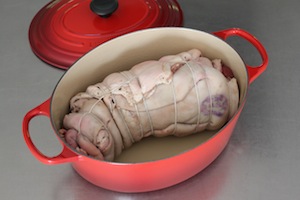 |
Place the pork roll in the Dutch oven pot. |
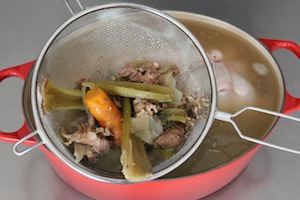 |
Cover with the filtered broth. |
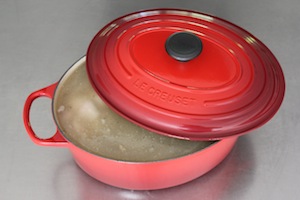 |
I didn’t have enough, so I added just half an inch of water. |
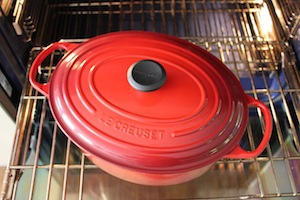 |
Cover the pot with a lid, and place in the oven. |
Cook at 250°F for at least 8 hours (Elias says: overnight), until very tender (can easily be poked by a skewer).
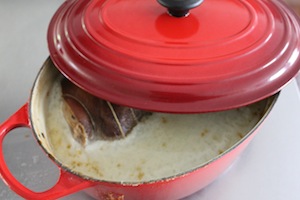 |
Take the pot out of the oven and let it cool in its own liquid. |
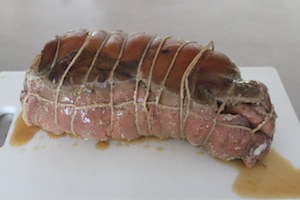 |
Remove from the liquid and… You are ready to enjoy! |
Since I am a distracted cook (and a good sleeper!), I left mine in the oven for about 12 hours instead… The result was actually so tender that it was difficult to properly slice. So I had to air it dry in the refrigerator for a couple of days to allow it to set.
Being definitely rich, the serving – you will realize – is just a couple very thin slices per person. It is perfect on antipasti, sandwiches or, even better, on top of hot, fresh polenta. Buon Appetito!
The original Olimpic Provision’s coppa di testa recipe
I followed Elias Cairo’s preparation but, as I mentioned, his ingredients were different. His recipe includes the following (but no wine or rosemary).
For a pig face of about 3 lb.: 27g. coarse salt (or 2 tsp. per lb. of pig face); 3 g. “insta cure 1” (nitrates, or ¼ tsp. every 5 lb. of pig face); 13 g. fresh garlic, chopped; 17 g. orange zest, grated; 1 g. fennel seeds, ground; 1 g. white pepper, ground; 1 g. coriander, groud; 2 g. black pepper, freshly ground.
Links:

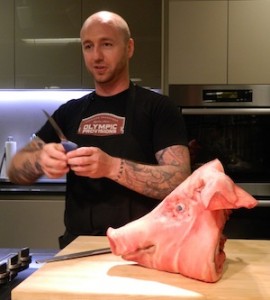
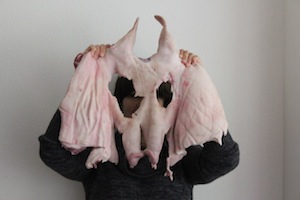
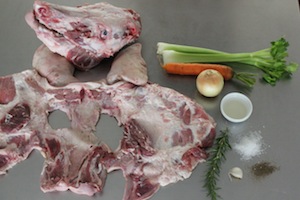
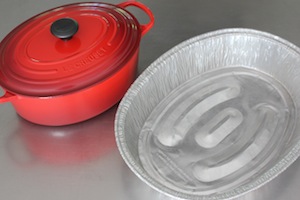
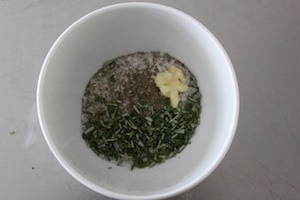
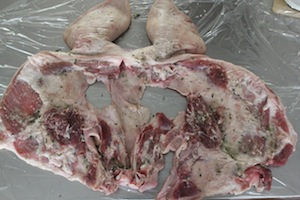
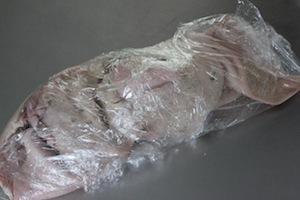
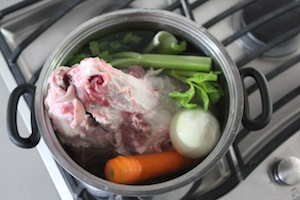
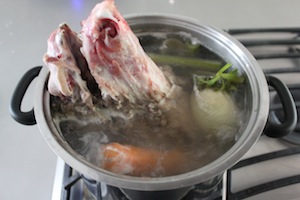
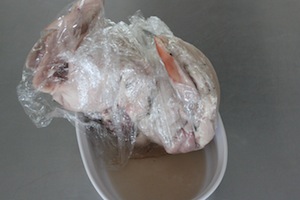
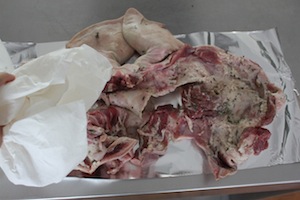
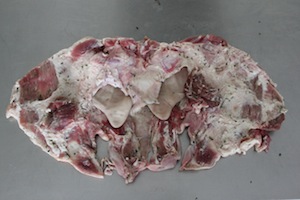
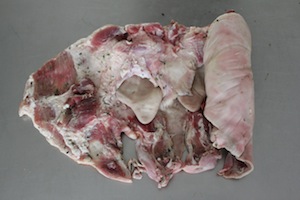
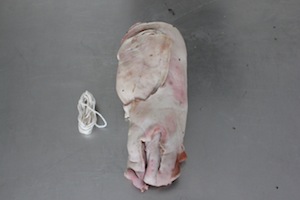
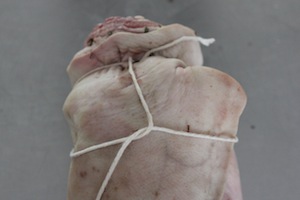
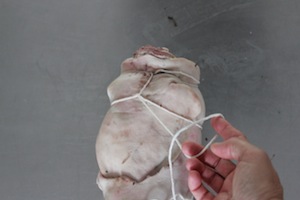
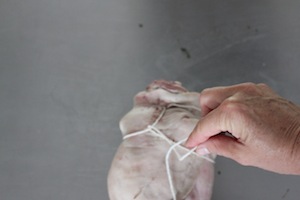
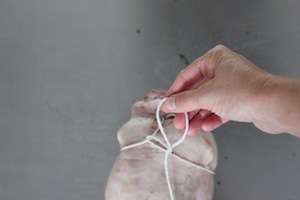

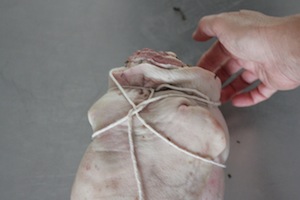
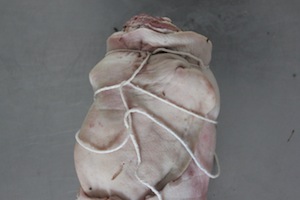
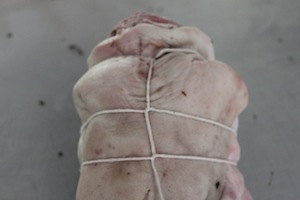
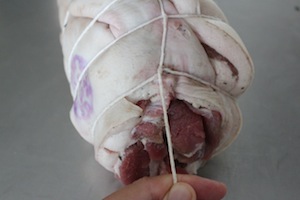
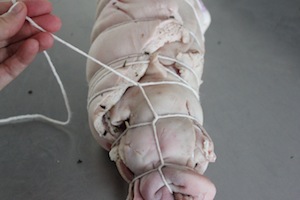
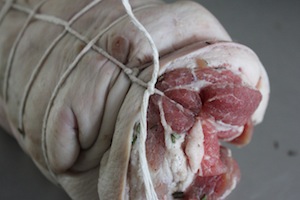
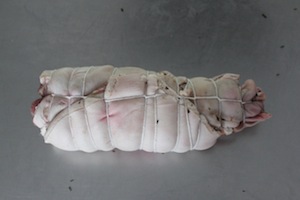
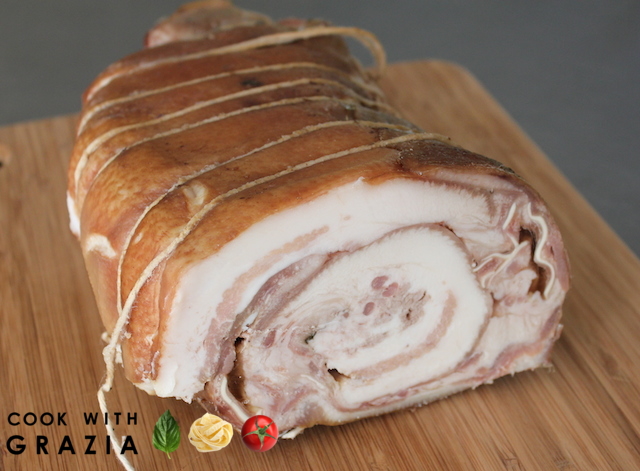
I absolutely love your step by step guide! I have never attempted to make head cheese, but after your wonderfully thorough walk through here, I think I need to try to now! 🙂
Thank you Hannah! Let me know how it goes!!!